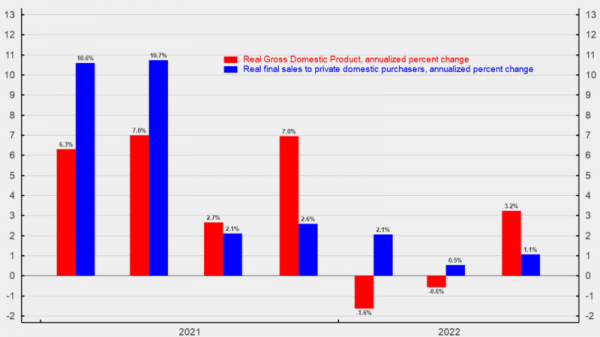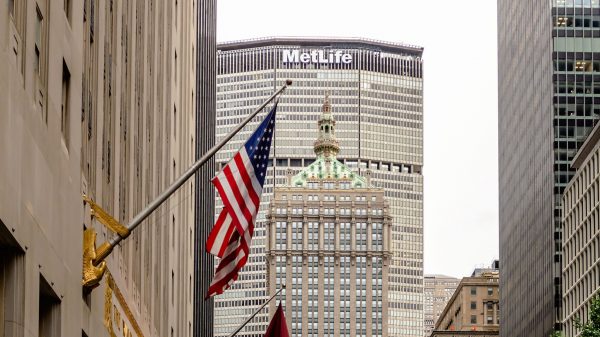

Battery metal cobalt has been in focus in recent years for its role in lithium-ion batteries, bringing attention to the top cobalt producing countries.
One of the metal’s main catalysts is the electric vehicle roll out. The lithium-ion batteries that power electric vehicles and energy storage require lithium, graphite and cobalt, among other raw materials, and demand for these important commodities is expected to keep rising as the shift toward clean technologies continues at a global scale.
Additionally, the metal is predominantly produced as a by-product of copper and nickel, two other metals that are important for the green transition.
However, supply growth in many of the battery metals has out scaled near-term demand, leading to a price pullback over the last two years. The cobalt market trended downwards in 2024, with prices falling 10 percent from July to September. While they stabilized for a few months, cobalt prices fell further in early 2025.
The cobalt market in 2025 is expected to largely remain stable as oversupply and shifting battery chemistries curb price volatility. The rise of lithium-iron-phosphate (LFP) batteries, particularly in China, continues to erode demand for cobalt chemicals, pressuring sulfate refiners and price growth.
Meanwhile, Indonesia’s expanding mixed hydroxide precipitate (MHP) production offers an alternative to the Democratic Republic of Congo (DRC), but adds to an already full market.
“Oversupply has been the dominant driving force for cobalt prices since 2023,” said Roman Aubry of Benchmark Mineral Intelligence, adding that this trend is likely to persist.
Longer term demand is projected to rise from 213,000 metric tons in 2023 to 454,000 metric tons by 2040, leading to a 16 percent shortfall by 2035, according to the International Energy Agency.
Investors interested in the sector should learn the top cobalt producers by country. According to the US Geological Survey, world production has increased significantly over the past two years.
In 2024, global production reached 290,000 metric tons (MT), representing a 21 percent increase from 2023’s 230,000 MT. Annual output has grown by 75 percent since 2021, when global cobalt mine supply totaled 165,000 MT.
Read on for a closer look at where cobalt is mined and which countries lead in production.
1. Democratic Republic of the Congo
Cobalt production: 220,000 metric tons
In 2024 the Democratic Republic of the Congo (DRC) produced 220,000 metric tons of cobalt, making it the world’s largest producer of cobalt, by far. Annual output from the country accounted for roughly 84 percent of all global production.
The DRC has been the top producer of the metal since 2003, and is likely to remain a crucial supplier to the cobalt market for the foreseeable future. However, cobalt mining in the DRC is plagued by human rights abuses and child labor due to widespread unregulated artisanal mining.
Efforts to regulate the sector and increase safety include the 2019 creation of state-owned Entreprise Générale du Cobalt, which struggled initially but secured exclusive mining rights to five areas through a 2024 agreement with state miner Gecamines.
Aside from that, the DRC’s mines minister formally approved the ASM Cobalt Standard in 2022, and plans for assessing its effectiveness at pilot sites are being developed. The framework for a regulated artisanal mining sector was drafted by the Responsible Minerals Initiative, in cooperation with both global and local stakeholders.
Outside the DRC’s artisanal mining sphere, cobalt is largely produced as a by-product of copper mines, including the Tenke Fungurume mine, owned by the CMOC Group (OTC Pink:CMCLF,HKEX:3993); and the Mutanda mine and Katanga complex, which are majority owned by Glencore (LSE:GLEN,OTC Pink:GLCNF). Another significant producer is the Metalkol Roan Tailings Reclamation mine, a tailings processing operation owned by Eurasian Resources Group.
In early 2025, the CMOC Group — the world’s largest cobalt miner — revealed plans to maintain record production levels, forecasting output between 100,000 and 120,000 MT in 2025 after producing 114,165 MT in 2024.
The company’s rapid expansion at its Tenke Fungurume and Kisanfu mines in the Democratic Republic of Congo has doubled production, contributing to a supply glut that has driven cobalt prices to their lowest levels since 2016.
2. Indonesia
Cobalt production: 28,000 metric tons
Indonesia cobalt production topped 28,000 metric tons in 2024. Mined supply has steadily increased in the country, growing by 937 percent since 2021, when annual output sat at 2,700 MT.
Indonesia’s battery metals sector grew rapidly after its 2020 nickel ore export ban, which attracted Chinese investment in Indonesian battery metals processing. Increased cobalt production stems from four new high-pressure acid leaching (HPAL) facilities processing ore into mixed hydroxide precipitate for export.
The first two HPAL operations came online in 2021 as part of the existing Indonesia Morowali Industrial Park: one run by Huayue, a partnership between Zhejiang Huayou Cobalt (SHA:603799), Tsingshan Holding Group and CMOC Group; and one run by Halmahera Persada Lygend, owned by Lygend Resources (HKEX:2245) and Trimegah Bangun Persada (IDX:NCKL).
In late 2022, a third HPAL facility entered production, this one developed by QMB New Materials, a joint venture between Tsingshan, GEM (SZSE:002340), CATL (SZSE:300750) and Hanwa (TSE:8078). Huayou also launched the Huafei HPAL facility in 2023, which has annual capacity of 15,000 MT of cobalt.
In mid-2024, partners Eramet (EPA:ERA) and chemical producer BASF (OTCQX:BFFAF,FWB:BASF) decided against executing the planned US$2.6 billion Sonic Bay nickel-cobalt hydrometallurgical complex due to nickel market dynamics, including low prices and oversupply. Sonic Bay would have processed ore from the Weda Bay nickel mine to produce 7,500 MT of cobalt and 67,000 MT of nickel per year.
According to a market report released in May 2024 from the Cobalt Institute, Indonesia has the potential to triple its 2023 cobalt output by 2030. In the same vein, the report estimates that Indonesia’s 2030 cobalt output will make up 16 percent of global production compared to 1 percent in 2021 and 5 percent in 2022.
While companies look to grow Indonesia’s cobalt presence, international concerns have been mounting about the impact of increased mining activity on the nation’s marine ecosystems. Much of the apprehension stems from mining activity in Raja Ampat Regency, a group of tropical islands near West Papua. The area houses 75 percent of the world’s coral species and more than 1,500 fish species. It was designated a UNESCO Global Geopark in 2023.
3. Russia
Cobalt production: 8,700 metric tons
Russia’s cobalt production in 2024 came in at 8,700 metric tons. While both the DRC and Indonesia saw significant growth, Russia’s annual tally remained unchanged from the previous year, despite the country boasting large cobalt reserves of 250,000 MT.
Large Russian miner Norilsk Nickel produces cobalt and is among the world’s top five producers of the mineral.
With concerns about DRC cobalt running high, some automakers have been calling for increased electric vehicle battery production in Europe. There was hope that this push could boost Russia’s future cobalt production — however, that may now be out of the question while the country wages war against Ukraine.
In April 2022, the US hit Russian cobalt with a 45 percent duty. The sanctions on Russian and Belarusian cobalt were extended in June 2024, and in September the US imposed a 25 percent tariff on Chinese cobalt.
Similarly, in December 2023, the UK government expanded its sanctions targeted at Russia to include an embargo of several critical metals, including tungsten, cobalt and tantalum.
4. Canada
Cobalt production: 4,500 metric tons
Canada produced 4,500 MT of cobalt in 2024, with most mined supply originating in the provinces of Ontario, Newfoundland and Labrador, Manitoba and Québec. The nation has an estimated 230,000 MT of cobalt reserves.
In 2022, Canada released its Critical Minerals Strategy, which included cobalt in its list of 31 minerals and metals the country had deemed “critical” for the energy transition, national defense and economic growth.
According to the Canadian government, cobalt and cobalt-containing exports fell by 30 percent year-over-year in 2023 to C$567 million, down from C$813 million in 2022.
Key export destinations included Norway (19 percent), South Korea (15 percent), China (15 percent), the Netherlands (15 percent) and the US (13 percent), with shipments consisting of cobalt metallurgy intermediates, waste and scrap.
Vale (NYSE:VALE) and Glencore are two of the largest cobalt producers in Canada, producing the metal as a byproduct at several mines each.
5. The Philippines
Cobalt production: 3,800 metric tons
The Philippines is the fifth largest cobalt producer in the world with production of 3,800 metric tons in 2024, the same as its 2023 output. The Asian country is also a top nickel producer.
The fate of mining in the Philippines was up in the air for a while as former President Rodrigo Duterte and former Environment Secretary Roy Cimatu called for a shutdown of all mines in the country based on environmental concerns. However, Duterte seemed to have a change of heart in early 2021, lifting a ban on new mine permits in an effort to boost revenues.
His successor, President Bongbong Marcos, has ordered the country’s Department of Environment and Natural Resources to enforce stricter guidelines and safety protocols on both small- and large-scale mines. He hopes to bring illegal mining operations into compliance so they can operate legally and with safer conditions for employees.
In April 2024, the US reaffirmed plans for a supporting grant for Eramen Minerals to develop a nickel and cobalt processing plant in the Philippines, boosting the country’s downstream mineral industry.
6. Australia
Cobalt production: 3,600 metric tons
Australia’s annual cobalt production fell to 3,600 metric tons in 2024, contracting 31 percent from 5,220 MT in 2023. Despite the contraction, the island nation’s cobalt reserves are the second largest in the world at 1.7 million MT.
As is the case for many other countries on this list, cobalt is produced in Australia as a by-product of copper and nickel mining. The country’s nickel mines are located in the western part of the country, mostly around the Kalgoorlie and Leonora regions.
Additionally, the Australian government has been sending geologists to search for cobalt in mine waste, an effort that bore fruit when Queensland geologist Anita Parbhakar-Fox tested a copper mine waste sample that graded 7,000 parts per million cobalt.
The CEO of Australian company Cobalt Blue Holdings (ASX:COB,OTC Pink:CBBHF) described the discovery as a game changer to the Financial Times, estimating there could be up to 300,000 MT of cobalt in Australian mine waste.
Another important cobalt project in the country under Cobalt Blue is the Broken Hill project, which will allow for cobalt production on-site, rather than extracted as a by-product of nickel. The company’s planned Kwinana facility will produce battery-grade cobalt sulfate from third-party feedstock as well as Broken Hill ore.
7. Cuba
Cobalt production: 3,500 metric tons
Cuban cobalt production made a modest gain in 2024 to 3,500 MT, up from 2023’s to 3,200 metric tons, but still short of the 3,700 MT mined in 2022.
The country’s Moa region is home to the Moa joint venture nickel-cobalt operation held by Canadian firm Sherritt International (TSX:S,OTC Pink:SHERF) and the General Nickel Company of Cuba.
Moa uses an open-pit mining system to produce lateritic ore, which is processed into mixed sulfides containing nickel and cobalt using HPAL. The country’s state-owned nickel miner is the sole operator of the Che Guevara processing plant at Moa.
In October 2024 operations at Sherritt’s Moa mine were temporarily reduced due to an island-wide blackout caused by a tropical storm. By October 28, the project returned to full operating capacity. According to annual financial results released on February 5, cobalt production from Moa totaled 3,206 MT, which the company says was within the guidance target range.
8. Papua New Guinea
Cobalt production: 2,800 metric tons
In 2024, Papua New Guinea produced 2,800 metric tons of cobalt. Like other nations on the list, the small country off the coast of Australia produces cobalt as a by-product of nickel production. Additionally, the country has remained on the top 10 producers list for the last seven years.
The country’s main cobalt producer is the Ramu nickel mine near Madang, a joint venture between private company MCC Ramu NiCo, Nickel 28 Capital (TSXV:NKL,OTC Pink:CONXF) and the Papua New Guinea government.
A mid-October report from Benchmark noted that by 2030, Chinese companies are expected to control 85 percent of cobalt output from Papua New Guinea, enhancing China’s global share of mined cobalt supply to 46 percent.
In January 2025, it was reported that Nickel 28 is considering a US$1 billion expansion at the Ramu mine that would aim to double annual output. The company’s 2025 guidance notes that cobalt output should remain steady this year at 2,900 MT.
9. Turkey
Cobalt production: 2,700 metric tons
In 2024, Turkey produced 2,700 MT of cobalt. Turkey’s output has been on a steady uptick in recent years, rising from 2,100 MT in 2022 to 2,500 metric tons in 2023 and even higher last year. The nation also boasts reserves totaling 91,000 MT.
A 2021 report from the British Geological Survey underscored the importance of Turkey’s cobalt potential amid the energy transition, noting “the greatest cobalt resource potential lies in laterite deposits in the Balkans and Turkey and in magmatic and black shale-hosted deposits in Fennoscandia.”
It went on to point out that in the Balkans and Turkey, 27 nickel laterite deposits are known to contain cobalt in significant quantities, with several deposits holding over 10,000 MT of cobalt metal. Currently, only nickel is extracted from these deposits, but advancements in processing technologies like high-pressure acid leaching may allow for cobalt recovery in the future.
The country’s Meta nickel-cobalt mine in Gördes is one of only a few nickel mines in Europe, making it important to the EU’s ability to meet European demand for electric vehicle battery materials. In September 2024, the planned expansion of the mine sparked local resistance, as community members raised concerns that the project was destroying forests, draining water and harming agriculture.
10. Madagascar
Cobalt production: 2,600 metric tons
Madagascar’s cobalt-production fell to 2,600 metric tons in 2024, a 53 percent decline from 2023’s 4,000 MT.
Much of the country’s cobalt production comes from the Ambatovy nickel-cobalt mine, owned through a joint venture by Japanese company Sumitomo (TSE:8053) and a Korean state-owned entity. The mine has faced production and profitability issues.
In August 2024, the companies submitted a debt restructuring plan to a London court. According to media reports, Sumitomo, the project’s major shareholder, has accumulated 410 billion yen in losses stemming from the project, including a 265.5 billion yen total impairment loss.
Most recently, in October, a pipeline moving ore from the mine to a processing and refining plant had to be shut down due to damage. While production began slowly ramping up at the end of the month, Ambatovy’s future remains uncertain.
FAQs for cobalt production
What is the most common source of cobalt?
As cobalt is only found in a chemically combined form, it must be separated from mined ore. Most commonly, cobalt is produced as a by-product at copper or nickel mines. According to Benchmark Minerals, currently three-quarters of cobalt is produced from copper-primary mines and 25 percent is produced from nickel-primary mines. The agency forecasts that by 2030, cobalt production from copper-primary mines will fall to 57 percent, while that from nickel-primary mines will rise to 41 percent.
How rare is cobalt on Earth?
Cobalt is the 32nd most common element on Earth, according to the Cobalt Institute, meaning it isn’t particularly rare. However, only a handful of countries have cobalt reserves over 300,000 MT, with the DRC coming in first place at 4 million MT, Australia in second at 1.5 million MT and Indonesia coming in third place with 600,000 MT. In fact, the DRC has higher cobalt reserves than the rest of the world combined.
How many years of cobalt are left?
How long it will take to deplete cobalt reserves and resources depends on the approach and speed with which electrification and a fully renewable society is approached, according to a 2019 study. Another factor is whether or not lithium-ion battery formulas that require cobalt will continue to be the norm in the future. If widespread cobalt substitution does take place, that will ease demand pressures on the metal.
Why is cobalt so valuable?
Cobalt has risen in recent years due to supply chain difficulties and the metal’s necessity in many lithium-ion battery cathodes, with prices peaking in March and April 2022 at over US$80,000 per MT. However, prices have fallen since then, and sat around the US$21,500 mark as of February 2025. The EV story has led to increased cobalt supply, meaning that there will be short-term price pressures due to oversupply as demand continues to rise in the coming years.
What is the problem with cobalt mining?
Most cobalt production takes place in the DRC, which is known for artisanal mining. Artisanal miners are adults and children who are not employed by mining companies, but mine independently using their own tools or just their hands.
A 2023 ABC news report on the country’s artisanal mining industry estimates that 200,000 artisanal miners are working on cobalt deposits; unfortunately, a lack of oversight and safety measures means injuries and death are more frequent than in regulated mining. While organizations are working to keep the supply chain transparent, it is hard to fully avoid cobalt that is sourced through child labor and human rights abuses.
Other countries are not exempt from concerns related to mining cobalt — Indonesia’s burgeoning cobalt production comes with the vast environmental concerns that plague the nation’s nickel industry.
Securities Disclosure: I, Georgia Williams, hold no direct investment interest in any company mentioned in this article.

























